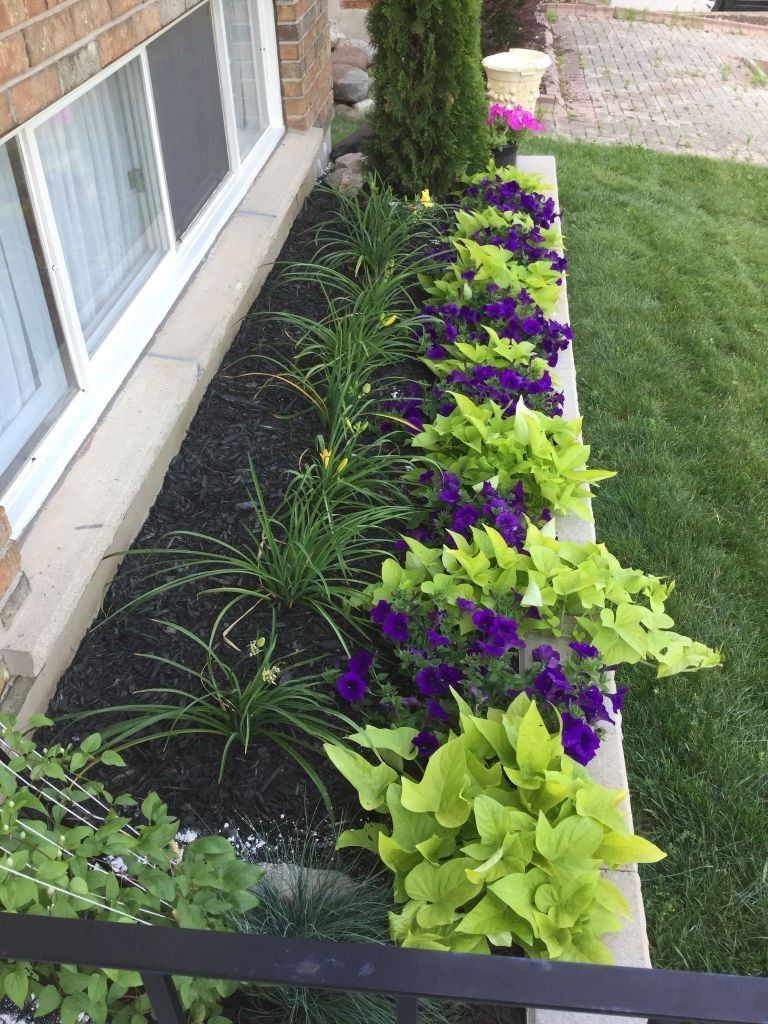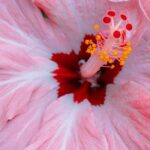Large landscape ideas can transform outdoor spaces into breathtaking and functional environments. From choosing the right plants and trees to creating visually stunning focal points, there are numerous elements to consider when designing a large landscape. In this article, we will explore the impact of large landscape ideas on outdoor spaces and provide tips for creating a cohesive and beautiful garden.
When it comes to designing a large landscape, selecting the right plants and trees is crucial for achieving a harmonious and attractive garden. We will discuss tips and tricks for choosing the perfect greenery that complements the overall design, as well as advice for maintaining a healthy and thriving garden.
In addition to plant selection, incorporating eye-catching features such as focal points, hardscaping, lighting, water elements, and eco-friendly practices is essential for creating a stunning and sustainable large landscape. We will delve into each of these aspects in detail to highlight their importance in outdoor design. Whether you are a landscaping novice or an experienced gardener, this comprehensive guide will inspire you to transform your outdoor space with these innovative ideas.
Choosing the Right Plants and Trees for a Large Landscape
When it comes to designing a large landscape, choosing the right plants and trees is essential for creating a cohesive and beautiful garden. With such a vast outdoor space, it’s important to consider the overall aesthetic you want to achieve and select vegetation that will complement the size and style of the area.
Consider Scale and Proportion
One of the key factors when choosing plants and trees for a large landscape is considering scale and proportion. Larger trees and shrubs can help fill out a spacious garden, while smaller plants can be used to create visual interest and variety. By incorporating different heights and sizes of vegetation, you can create a sense of balance and harmony in your outdoor space.
Focus on Diversity
Diversity is also crucial when selecting plants and trees for a large landscape. By incorporating a variety of colors, textures, and seasonal blooms, you can create an ever-changing outdoor environment that remains visually appealing year-round. Additionally, opting for native plants can help attract local wildlife and support the ecosystem in your area.
Consider Maintenance Needs
In addition to aesthetics, it’s important to consider the maintenance needs of the plants and trees you choose for your large landscape. Opting for low-maintenance vegetation can help reduce upkeep costs and ensure that your garden remains looking its best with minimal effort. Furthermore, selecting drought-resistant plants can help conserve water in your outdoor space.
By carefully considering these tips when choosing plants and trees for your large landscape, you can create a beautiful garden that complements the size of your outdoor space while enhancing its overall appeal.
Focal Points and Eye-Catching Features
When designing a large landscape, creating visually stunning elements is crucial to making a lasting impact. Whether you have a sprawling backyard or expansive grounds, incorporating focal points and eye-catching features can elevate the overall aesthetic of your outdoor space. From sculptures and planters to architectural elements and unique plantings, there are numerous ways to make a statement in a large landscape.
Artistic Elements and Sculptures
One way to create visual interest in a large landscape is by incorporating artistic elements such as sculptures, statues, or other art installations. These can serve as focal points that draw the eye and add personality to the space. Consider selecting pieces that complement the overall style of your landscape and reflect your personal taste.
Unique Plantings and Garden Beds
Another way to create visual appeal in a large landscape is by incorporating unique plantings and garden beds. Experiment with different colors, textures, and heights to create dynamic arrangements that catch the eye. Introducing interesting foliage and flowers can add layers of visual interest throughout the space.
Architectural Features
Incorporating architectural elements such as pergolas, archways, or trellises can also contribute to the visual impact of a large landscape. These structures not only provide height and dimension but also serve as focal points that help define different areas within the outdoor space. Consider integrating these features into your design to add depth and character to your large landscape.
By strategically utilizing these elements and features, you can transform your large landscape into a visually stunning oasis that captivates both guests and residents alike. Whether through art installations, unique plantings, or architectural structures, these eye-catching features will undoubtedly elevate the overall aesthetic of your outdoor space.
The Importance of Hardscaping in Large Landscapes
The addition of hardscaping elements can greatly enhance the beauty and functionality of a large landscape. When designing a large outdoor space, incorporating pathways, patios, and other structures is essential for creating a cohesive and well-designed environment. Here are some tips for integrating hardscaping into your large landscape:
- Pathways: Create a sense of flow and organization in your large landscape by adding pathways that connect different areas of the garden. Whether made of natural stone, pavers, or gravel, pathways can guide guests through the space while also adding visual interest.
- Patios: A well-designed patio can serve as an outdoor living room, dining area, or entertaining space within a large landscape. Consider the size and layout of your outdoor space when designing a patio to ensure it complements the overall design while providing functional use.
- Other Structures: Incorporating structures such as pergolas, gazebos, or archways can add architectural interest to a large landscape. These elements not only provide shade and shelter but also create focal points and visual impact within the garden.
When planning hardscaping elements for your large landscape, it’s important to consider the materials used, maintenance requirements, and how these structures will complement the overall design aesthetic. By thoughtfully integrating pathways, patios, and other hardscaping features into your outdoor space, you can create a visually stunning and functional environment that enhances the natural beauty of your garden.
Lighting and Ambiance
Strategic lighting can greatly enhance the beauty and functionality of a large landscape, creating ambiance and highlighting key features. When planning the lighting for a large outdoor space, it’s important to consider both practical and aesthetic aspects. The right lighting can make your garden or backyard more usable after dark while also showcasing its unique elements.
One key consideration when planning lighting for a large landscape is determining the purpose of each area. For example, pathways and seating areas may require different types of lighting to ensure safety and create the desired atmosphere. Additionally, using a combination of different light fixtures, such as spotlights, uplights, and string lights, can add depth and visual interest to the overall design.
In terms of aesthetics, strategic lighting can highlight focal points such as trees, sculptures, or architectural elements. By illuminating these features from various angles, you can create dramatic effects that draw attention to specific areas of your large landscape. Moreover, integrating environmentally friendly LED fixtures into your design not only reduces energy consumption but also allows for greater flexibility in terms of color and brightness.
| Aspect | Consideration |
|---|---|
| Purpose of Each Area | Determine the type of lighting needed for safety and atmosphere |
| Combination of Fixtures | Use spotlights, uplights, and string lights for depth and visual interest |
| Highlighting Focal Points | Create dramatic effects by illuminating trees, sculptures, or architectural elements from various angles |
| Environmentally Friendly Options | Integrate LED fixtures to reduce energy consumption and allow for greater flexibility in design |
Maintenance and Upkeep
Maintaining a large landscape can be a daunting task, but with the right strategies and tips, you can keep your outdoor space looking its best year-round. By implementing proper maintenance practices, you can ensure that your large landscape remains healthy and vibrant, enhancing the overall beauty of your property.
Here are some essential tips for maintaining a large landscape:
1. Regular watering and fertilization: Proper hydration and nutrition are crucial for the health of plants and trees in a large landscape. Implementing a regular watering schedule and providing necessary fertilization will help ensure that your greenery thrives throughout the year.
2. Pruning and trimming: Regular pruning and trimming of plants, shrubs, and trees are essential for maintaining their shape, promoting healthy growth, and preventing overgrowth. Be sure to remove dead or damaged branches to maintain the overall appearance of your large landscape.
3. Weed control: In a large landscape, weed control is particularly important to prevent invasive plants from taking over flower beds and other areas. Implementing mulching and regular weeding can help keep unwanted vegetation at bay while allowing your chosen plantings to shine.
By following these maintenance tips for your large landscape, you can ensure that it remains an inviting and breathtaking outdoor space throughout the year.
Additionally, it may be beneficial to consider hiring professional landscaping services for larger upkeep tasks or periodic maintenance to ensure that your large landscape ideas are fully realized in their potential beauty.
Integrating Water Features Into a Large Landscape
When it comes to large landscape ideas, incorporating water features can add a sense of tranquility and elegance to any outdoor space. Whether you opt for a serene pond, a captivating fountain, or other water elements, the addition of water can create a soothing atmosphere that enhances the overall beauty of your landscape. Water features also attract wildlife and contribute to the biodiversity of your garden.
One popular choice for integrating water features into a large landscape is the creation of a koi pond. Koi ponds not only provide a visually striking focal point but also offer the opportunity to care for and admire these colorful fish. In addition to koi ponds, fountains are another delightful option that adds both visual and auditory appeal to your garden. The sound of running water can have a calming effect and make your large landscape feel like an oasis.
Incorporating water elements into your large landscape design requires careful planning and consideration. You’ll need to assess factors such as available space, maintenance requirements, and budget. While some water features may necessitate more upkeep than others, the investment in creating a tranquil environment is well worth it. With strategic placement and thoughtful design, you can transform your outdoor space into an idyllic retreat that reflects your personal style and provides endless enjoyment for years to come.
| Water Feature Option | Advantages |
|---|---|
| Koi Pond | Provides visual appeal; opportunity to care for colorful fish |
| Fountain | Offers visual and auditory appeal; creates soothing atmosphere |
Sustainable and Eco-Friendly Large Landscape Ideas
In conclusion, creating a stunning and harmonious large landscape requires careful planning, attention to design elements, and a thoughtful approach to sustainability. By choosing the right plants and trees, incorporating focal points and eye-catching features, utilizing hardscaping, lighting strategically, and integrating water features, you can transform your outdoor space into a breathtaking oasis. However, it is crucial to also consider the environmental impact of your landscape design.
Incorporating sustainable and eco-friendly practices into your large landscape can not only benefit the environment but also contribute to the overall beauty and functionality of your outdoor space. From selecting native plants that require less water and maintenance to implementing permeable paving materials that reduce runoff and erosion, there are countless ways to make your large landscape design more environmentally friendly.
By embracing sustainable practices such as composting waste from your garden, using organic fertilizers, and harvesting rainwater for irrigation, you can minimize the negative impact of your large landscape on the environment while still enjoying a lush and inviting outdoor space. Ultimately, by considering the long-term ecological implications of your design choices, you can create a large landscape that not only captivates the eye but also respects and preserves the natural world around us.
Frequently Asked Questions
How Do You Landscape a Large Yard on a Budget?
Landscaping a large yard on a budget can be accomplished in several ways. One approach is to start with a well-thought-out plan that includes prioritizing which areas of the yard to focus on first. Selecting low-maintenance plants and using mulch or gravel for ground cover can also help keep costs down.
Utilizing native plants that are well-suited to the local climate and conditions can reduce the need for excessive watering or maintenance. Additionally, considering DIY projects, such as building raised beds or creating pathways with inexpensive materials, can help save money.
What Are the 7 Principles of Landscaping?
The seven principles of landscaping provide a framework for creating visually appealing and functional outdoor spaces. These principles include simplicity, variety, balance, emphasis, sequence, scale, and unity. Simplicity refers to keeping the design uncomplicated and avoiding clutter. Variety involves using different shapes, colors, and textures to add interest. Balance ensures that elements in the landscape are evenly distributed.
Emphasis highlights focal points within the design. Sequence creates a sense of movement throughout the space. Scale considers the size of elements in relation to each other and the surrounding environment. Unity ties everything together by creating an overall cohesive look.
How Do You Landscape a Large Front Yard?
When landscaping a large front yard, it’s important to consider curb appeal and functionality. Designing a focal point near the entrance, such as with an eye-catching plant or pathway, can create visual interest. Incorporating a mix of evergreen shrubs and flowering plants can provide year-round color and texture while minimizing maintenance needs.
Using hardscaping elements like walkways or retaining walls can add structure and enhance usability. It’s also crucial to take into account factors like sun exposure and soil conditions when selecting plants for a large front yard landscape project.

Welcome to my gardening blog! I am passionate about plants and enjoy sharing my knowledge and experiences with others. In this blog, I will write about everything related to gardening, from tips on how to get started to updates on my own garden projects.





